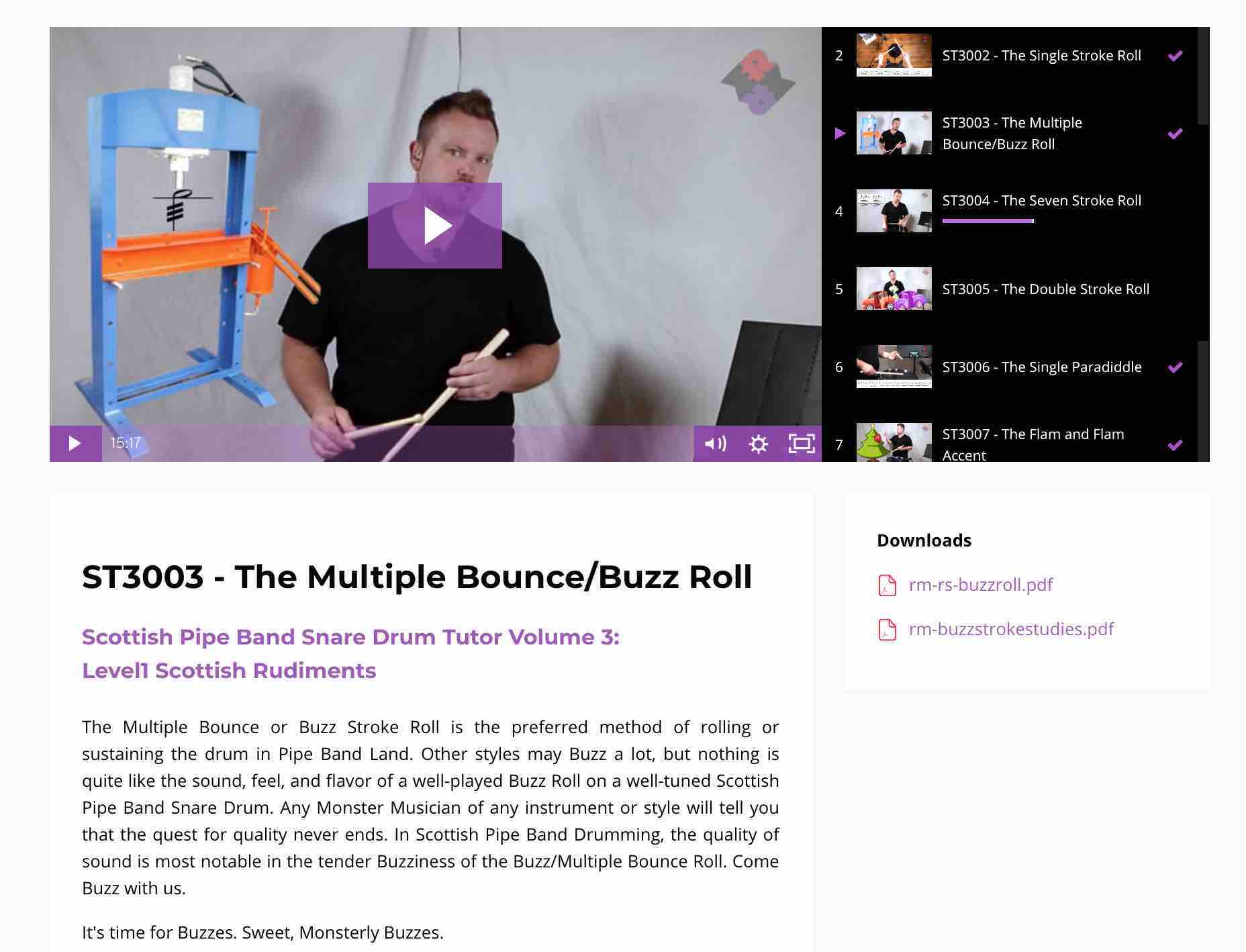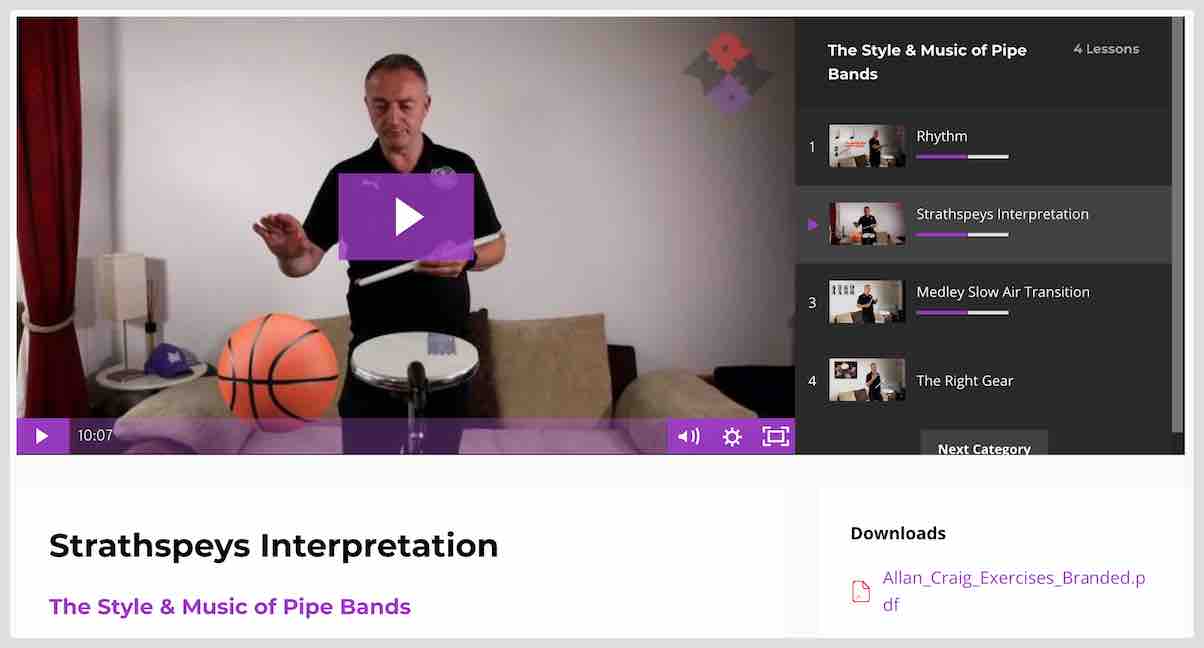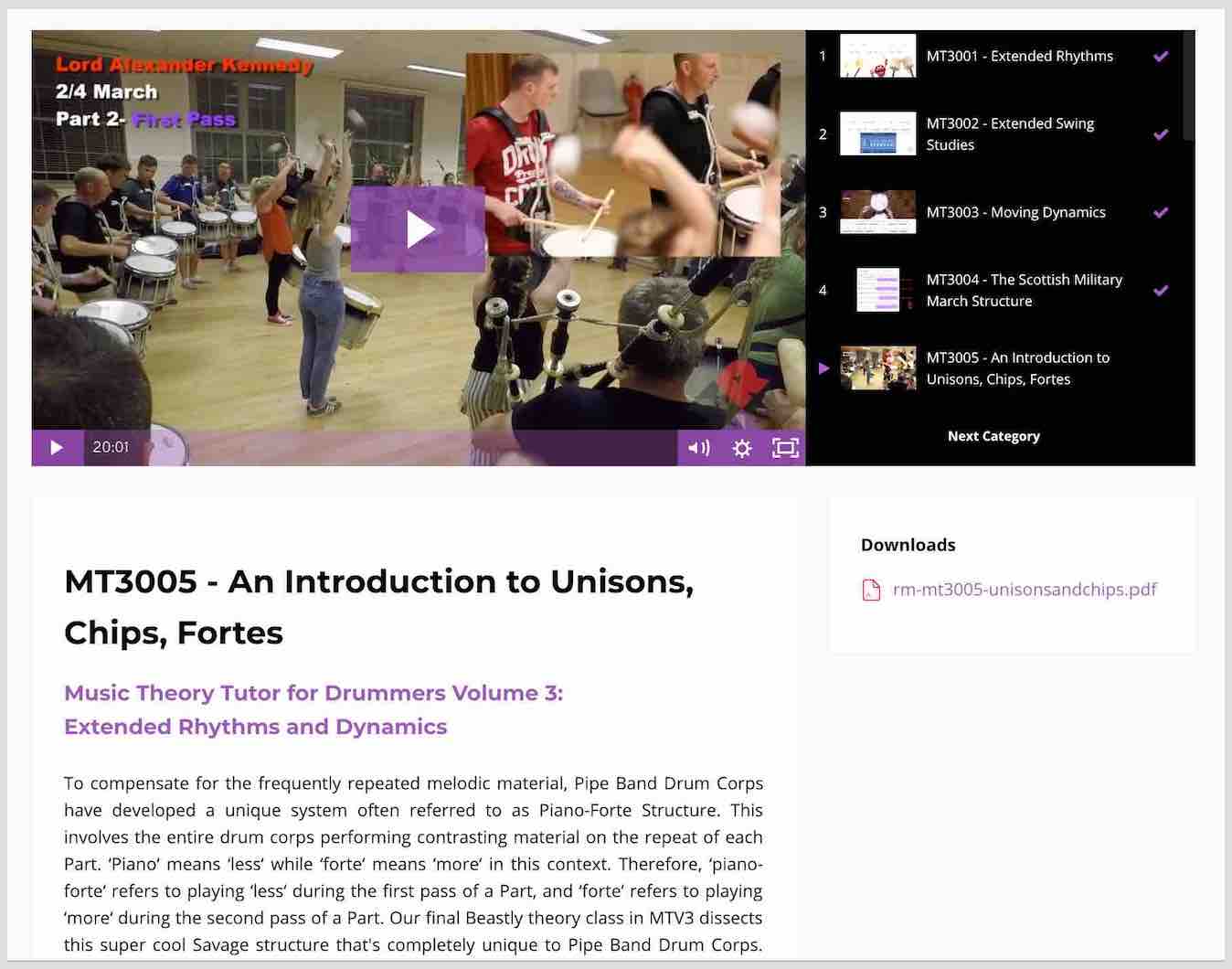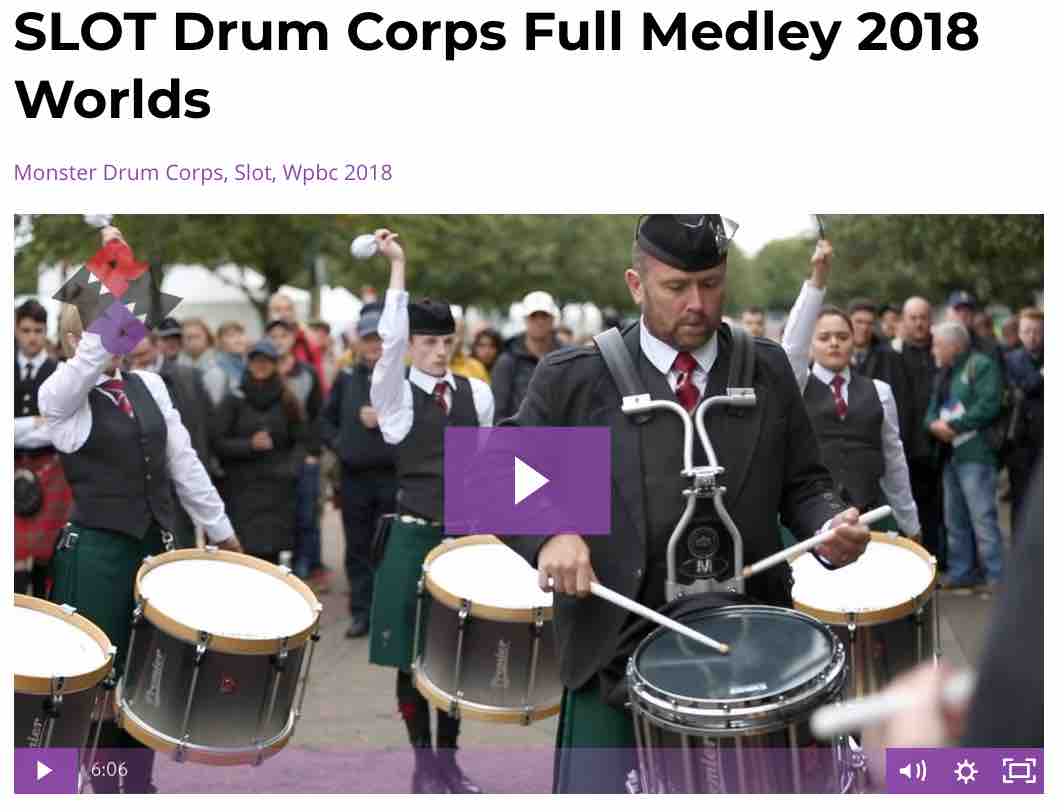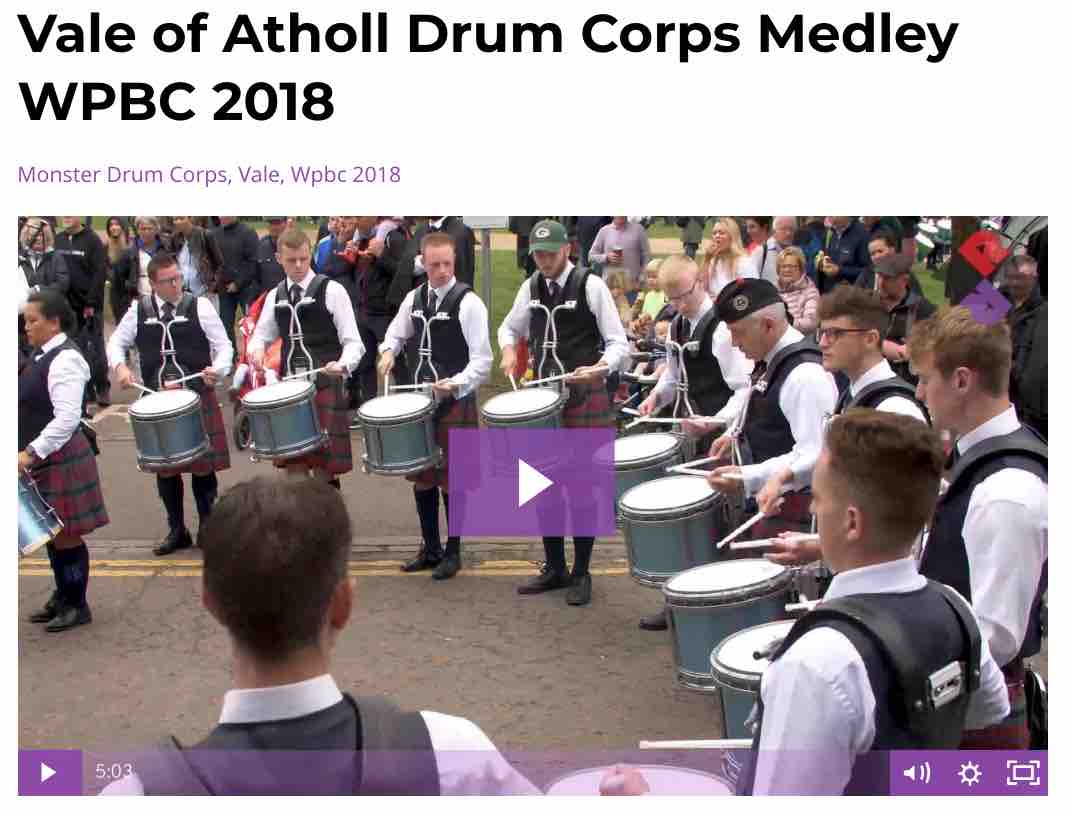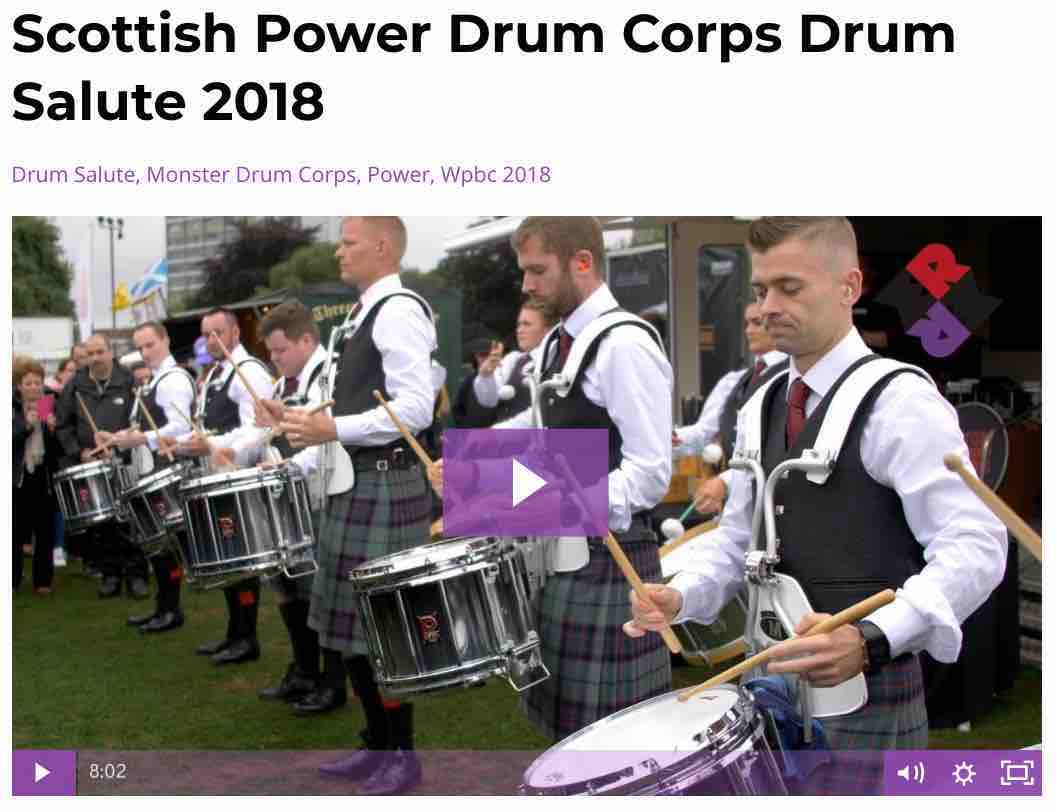
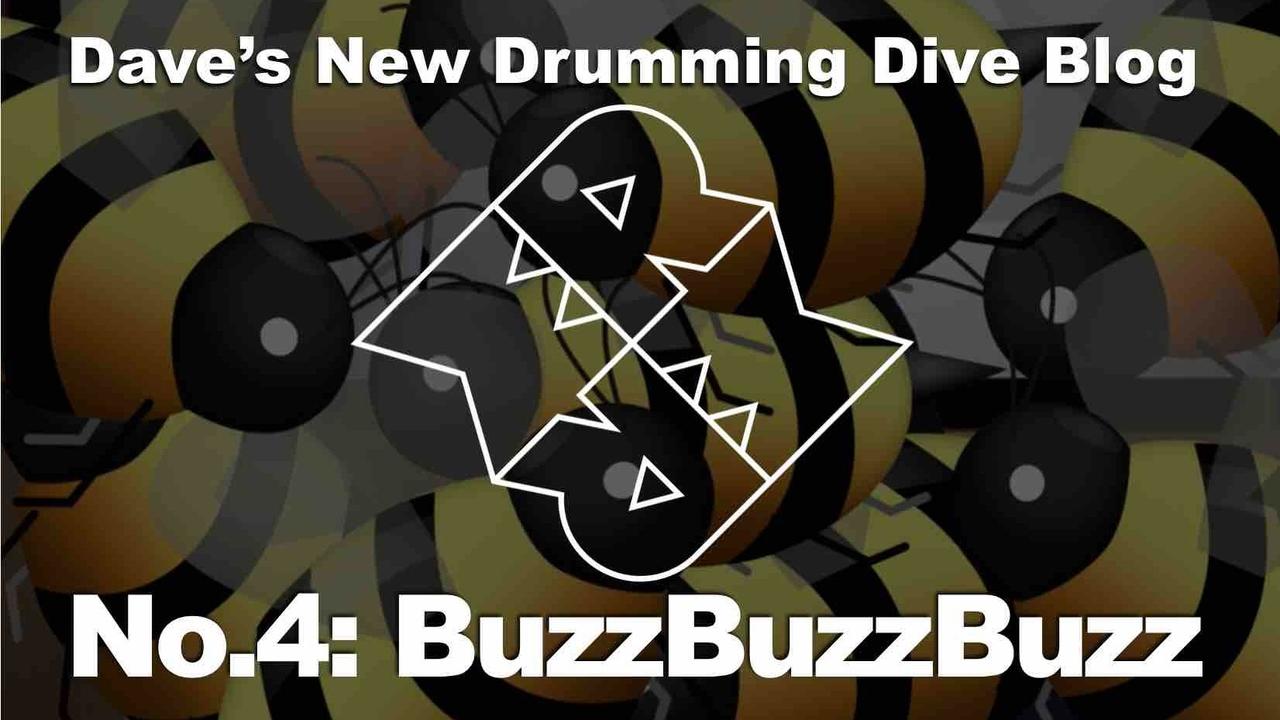
Dave's Blog | #4: BuzzBuzzBuzz
BuzzBuzzBuzz
A Monster Blog Series by Dave Bullard
If I had to pick one single thing that I love about Scottish Drumming, it would be its use of Buzz Rolls. Check this out...
I mean, just listen to that.
Seriously. Don’t watch, just listen.
That sound is just plain incredible. I can’t think of anything else even remotely close to it. It’s like a combination of rain, waterfalls white noise, and a million record needles crying out in terror. Maybe with some bacon frying in there somewhere. It deserves it’s own word.

Unfortunately, over here in my LARWO (Little American Rudimental WOrld) the word, "roll" refers to the open variant. Now that I’ve learned about what can be done with the closed variety, I’m changing that definition in my head. From now on, when I write "roll" I mean Buzz Roll. American style machine-gunning will be referred to by the term "Open Roll."
From the Rhythm Monster
Scottish Pipe Band Snare Drum Tutor ST2006- The Buzz Stroke
The Scots Gave the Snare Drum Sustain
My experience in the LARWO has very little to say about rolls.
All of my experience came from drum set playing where rolls were almost always a textural thing, used mainly as filler in down-tempo songs. I remember hearing a Buddy Rich solo where he played rhythmic taps inside of a long roll, making it seem like the roll never stopped. It is magical to me and was unattainable for a very long time.
Some time last year I resolved to figure it out and started woodshedding it with dedication. I can say that I can get pretty close on a drum set snare drum and I've begun to be comfortable using them as part of my rhythmic palette.
I was rather proud of the progress I had made…(There’s a theme here btw)...then I found out what the Scots were doing.
While not as mind blowing as the drag, it was definitely eye opening. It was yet another area of the art that had gone largely unexplored in my little American rudimental world. I began to woodshed them with my usual vigor and abandon.
Over time I found that the primary challenge for me was not about producing the sound. For whatever reason, I seem to be able to get them pretty smooth and what roughness there is will improve with time and experience.
The challenge for me was/is rhythmic interpretation,
Allow me to explain...
Pipe Band Roll Interpretation
One day during rehearsal I received the following advice,
Wood: “Think of that third beat as a quintuplet.”
Dave: “You mean the one that looks like two 16th notes followed by an 8th note roll”?
Wood : “Yep”
Dave: “ uhh....(Goes ahead and interprets it as quintuplets)… it works!!”
Wood: “Yep”
So, turns out that in the Strathspey idiom,
sometimes  equals
equals 
Later on…
Allison: “... that quintuplet at the end of the measure is more like a Single Stroke 5 (over a triplet)
Dave: “ohhhhhh”
(I still can’t play that one clean…)
This is completely, irredeemably, bonkers from the LARWO perspective.
Not that there aren’t differences between drum lines. Most of us can tell which side of the US you are from by how you play your Flam Drags, but it’s nowhere near as varied as the Scots.
So the question remains:
How is it done?
Well, with excellent notation!
Sort of.
Monkey see...
See, in my LARWO, time keeping is largely a matter of physically and/or mentally tracking a regular subdivision of the beat. Usually these are triplets or 16ths with occasional raids into quintuplet territory, but even then they're almost always subdivided into groups of 2 and 3 notes.
Additionally, within the confines of the LARWO precision is rooted in mathematical ‘correctness’. The thinking is if you do it ‘right’ you will be ‘clean’. Well...Sure. Whatever.
If your objective is clean, open stroked machine gun fire at 200 bpm while jumping backwards through a typhoon consisting entirely of flying swords, well, that’s certainly achievable with that sort of thinking.
But what if you want soul and expression?
That’s not too much to ask from a snare drum is it?
The Scots do it, and they do it as clean as any DCI drumline can. You need more than math to get that soul. You need freedom to screw around with time.
There have been entire doctoral thesis written on this subject.
All of the jazz greats do it. Coltrane, Davis, Monk. Each of those dudes has a unique approach to time. They have specific, measurable patterns in how they swing, almost like an accent. It’s a large part of what makes them great. The same holds true for the great Scottish Pipe Band Drummers as well.
Bringing this into rudimental Snare Drum (of all things) requires the latitude to swing, stretch and squeeze the groove however you want. And this freedom is baked into the Scottish tradition.
I’m sure there are millions of words written about this aspect of Scottish Drumming and I doubt that I’m contributing anything new, but I’m going to go out on a limb and claim that it’s related to why we have ‘chips’.
According to Wikipedia’s entry for Pipe Band:
”The pipe band drum corps is responsible for both supporting the piping with a solid rhythmic foundation and sense of pulse, often creating an interesting contrapuntal line unto itself. The line played by the drum corps (referred to as the 'drum score') is usually based on rudimentary patterns and can often be quite involved, with solo, unison and contrapuntal passages throughout. A popular pattern in many scores is for the lead drummer to play a phrase, and the section to play in response. This technique is known as seconds (sometimes referred to as chips, or forte)”
Back in the day pipe band drums was all about “call and response”. This is an ancient tradition in music styles all over the world. The only difference here is that it’s just pure rhythm. The lead drummer would play something the first time through a phrase and everyone would try to duplicate that on the next time through. This was inherently free. The music that resulted was just totally infused with the rhythmic personality of the Lead Drummer. It was probably not even something that folks thought about very much. That tradition continues today, expressed in the limitless variety of interpretations that have been shaped by tradition and personality since time immemorial.
That sort of freedom is impossible to capture with a formal notation system. The Scots come close, but wisely leave just enough room for this lovely characteristic of the form to continue to flourish.
Here’s a selection of some of the greats. I’m in love with the variations in style.
Dig? Subscribe today to join Dave and thousands of other Monster Drummers from around the world by learning online with Rhythm Monster!
I’ve had several conversations about how, “the only thing that DCI techs really do is count off and yell LISTEN!". It is true, you certainly do have to listen. But there’s another layer here in Pipe Band Land and it requires yet another new skill. In this tradition you have to watch too.
Up next:
The "Map is Not the Territory" & "Dave Learns to Watch"
Hey, you made it to the end! Isn't it fun to read and learn? Since you're clearly into learning stuff, below is a super secret link for a 7-Day Free Trial to Rhythm Monster! That's right, friend, 7 days of blissful online drumming education accessible from any device, worldwide. Way to be awesome!
Why you still reading, pal? I thought you were into learning? Get click'n Friend!
🥁😈

Why Choose Us
Integer nisl odio, scelerisque
fermentum rutrum leo. Praesent sit amet sem aliquet, dapibus metus et, tempor sapien. Cras varius metus metus, ac tempor ex malesuada lacinia. Nulla facilisi. Integer ultrices, risus sed euismod rhoncus
orem leo egestas velit, id volutpat ex nibh a neque. Quisque orci metus
iaculis libero. Nam porttitor nisi sed elit dictum, sed rhoncus
ipsum luctus. Pellentesque viverra, diam ac euismod pharetra

